Richmond’s Roots
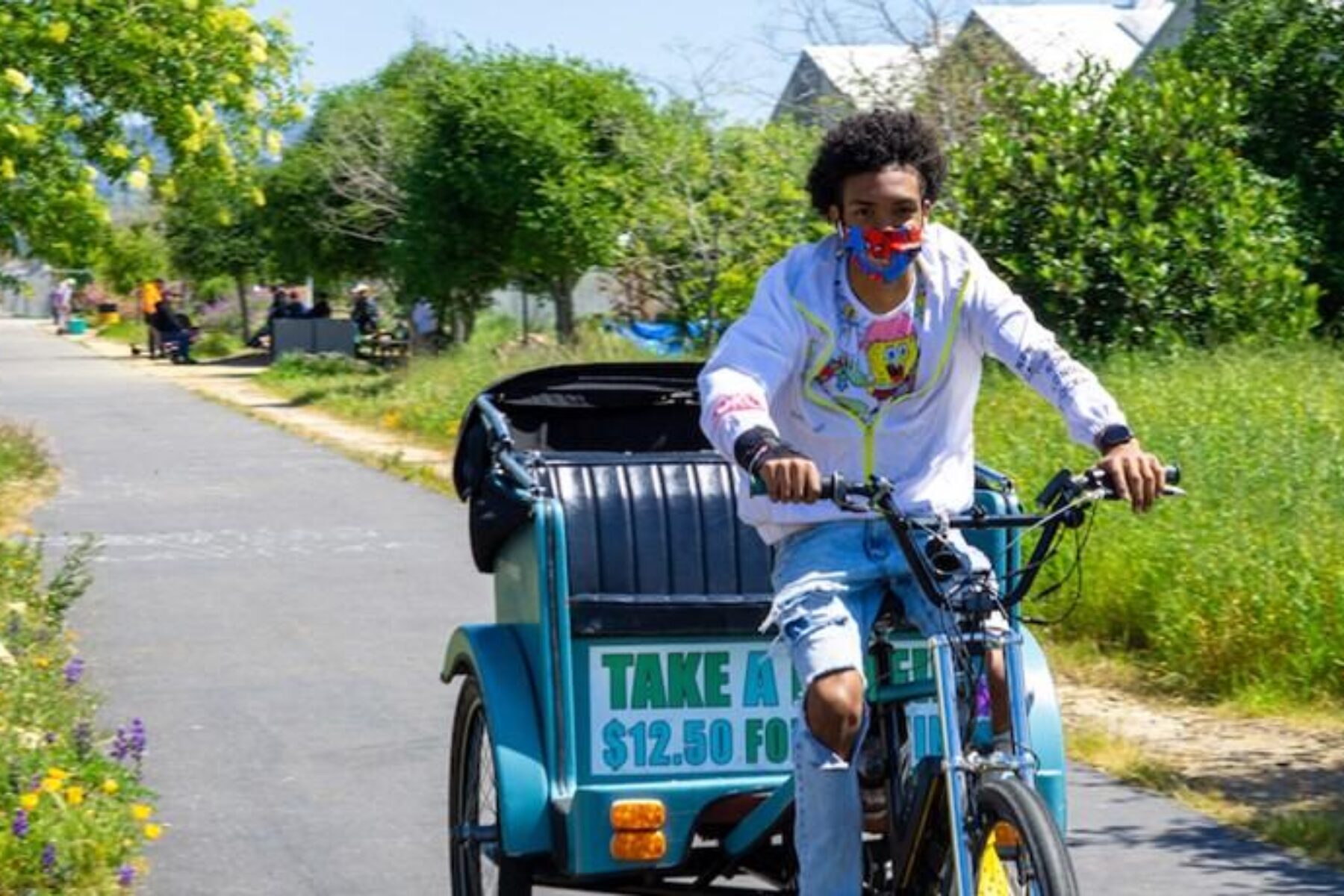
This article was originally published in the upcoming Winter 2022 issue of Rails to Trails magazine. It has been reposted here in an edited format. Subscribe to read more articles about remarkable rail-trails and trail-networks while also supporting our work.
It’s a chilly mid-November Saturday morning in California’s East Bay, and a collection of staff members from Urban Tilth, an agricultural nonprofit that operates a farm and community gardens in Richmond, California, is leading a volunteer cleanup and planting session on a section of the 3-mile Richmond Greenway. Their focus is on a trail block that houses their 6th Street Community Garden, a space where just about anything you could imagine growing in Northern California grows in raised beds. Whoever wants strawberries, sage, hot peppers—or anything else that’s on the vine that day—can pick them.
“It’s a legion, a little cohort. A crew of people who are utterly dedicated to transforming the space to open space, to healthy spaces, to healthy food.”
—Doria Robinson, Executive Director, Urban Tilth
As the team picks up litter in one of the bioswales that flank the trail, Arleide Santos, a greenway community organizer with Urban Tilth, holds her cellphone in one hand and English- and Spanish-language release forms in the other, waiting for the next person to pass. She is making a video about the greenway for Urban Tilth.
Soon after, she stops Lydia Perdomo and Emilio Fuentes, who are walking by with their dogs. “I’m trying to get some interviews of people that are using the greenway,” Santos says. “How long have you lived here, and how often do you use the greenway?”
Perdomo says she has lived in Richmond since 1989, when she was 8 years old. She came of age when the greenway was still decades from completion—a time when it was an often-impassable dumping ground on a set of abandoned train tracks given to the city in the late 1970s.
“It’s been nice, especially recently with all the work that’s been going on,” Perdomo says. “We’ve used it a lot more.”
The feedback is not surprising to Santos, who also serves as the communications director for the nonprofit Moving Forward, which provides scholarships and health and wellness opportunities for Richmond youths. Santos has been getting a crash course on the greenway since Urban Tilth, which sponsors Moving Forward, hired her in 2021. It will be very useful for the video interview project, which Santos said grew out of meetings with members of Friends of the Richmond Greenway, a group of community activists who have adopted and transformed many of the 32 acres that border the east–west linear park. They want to know more about trail use along the greenway, which has seen a transformation over the past decades, and want to show those answers to others. Maybe people would see an interview with someone walking a dog or pushing a stroller and consider using it with their pets or kids as well.
Santos, as so many local community groups and residents have done with greenway-connected projects in recent years, took the idea and ran full speed with it.
Richmond Greenway Community Groups
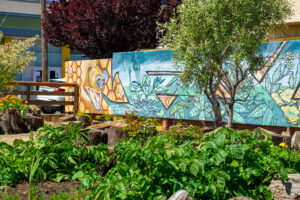
Along the Richmond Greenway in West Contra Costa County, California, community groups are activating the space and using the trail as a catalyst for revitalization and the reimagining of some of the most underserved neighborhoods in the San Francisco Bay Area. View a map of the trail on the inside back cover. For more info, go to: rtc.li/richmond-ca-greenway.
A Community Mobilizes
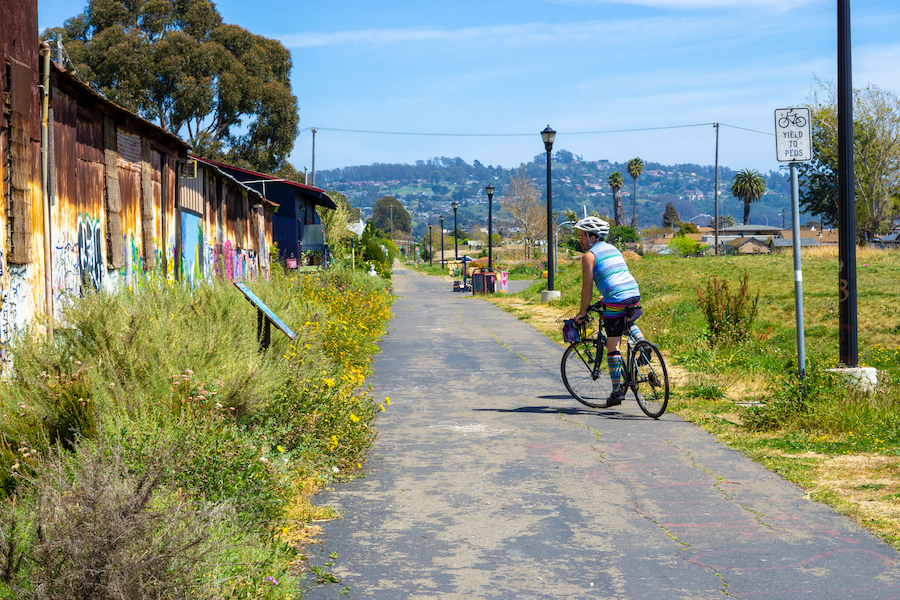
The energy and passion—seen from Santos and so many others—is a defining force in the story of the greenway, which has seen many chapters already in its 15 years of existence, and in its longer history as a railroad corridor and blighted area. Early championing for the greenway is credited to local community activist Lillie Mae Jones, who recognized the lack of green space decades ago in her Central Richmond neighborhood—a 3-mile area that includes the downtown business district and is known as the “Iron Triangle” for its shape between multiple sets of railroad tracks. In fact, Jones began advocating for a walking trail well before the final freight train ran along the Atchison, Topeka & Santa Fe Railroad line on the Triangle’s southern border in 1979. Jones, who died in 2016, would go on to found the Community Youth Council for Leadership and Education (CYCLE) to empower kids and build support for the greenway. The city had already designated 32 acres of the railroad right-of-way as recreational and open space.
In the early 1990s, a city councilmember, Tom Butt, now the city’s mayor, would champion early planning efforts for the trail. But decades passed between concept and execution.
Urban Tilth Executive Director Doria Robinson, who grew up in the Iron Triangle around the same time Perdomo did, said residents considered the abandoned railway the “shortcut.” For Robinson, it was a straight shot from her home on Fifth Street to her grandparents’ place on the south side of Ohio Street. It was a trip that involved tiptoes. Broken glass and illegally dumped garbage littered the corridor. She remembered seeing an abandoned hot tub out there at one point.
“You kind of meandered your way around the crap to get to where you were going,” she said.
Rails-to-Trails Conservancy (RTC) got involved in advocating for the greenway soon after opening a Western Regional Office in San Francisco in 1996. The Richmond Greenway was the West Coast staff’s first major development push, and RTC helped the City of Richmond secure more than $2 million in funding for the project.
The greenway grew neglected soon after opening in 2007, which Robinson attributes partly to a lack of city funding to support the trail. Then community groups started to step up—with more than 20 groups mobilizing in 2011 to get the city to adopt it as a public park. Since then, the greenway has welcomed several major additions.
Unity Park, a state-grant-funded city park that features murals, playground equipment, orchards and covered seating designed with help from community members, opened in 2018. Dirt World now draws residents and visitors to a world-class BMX course built where trash heaps once piled. Harbour-8 Park, another major development that will be located between Unity Park and the 6th Street Community Garden, is funded and underway. A community-crafted master plan developed as Unity Park advanced includes a wish list of ideas still in search of funding, including a dog park, skate park and trail signage.
Meanwhile, the gardens have expanded in size and scope, and roots have grown stronger along the greenway. Urban Tilth operates the 6th Street Community Garden and the Edible Forest 10 blocks east of it. Community members have adopted additional plots. The greenway has come a long way since Doria Robinson first helped build raised beds in the Sixth Street space in 2006 and a passerby rather vocally expressed disbelief at the project.
“They were like, ‘What the hell are you doing?’” Robinson recalled. “‘Nobody’s gonna eat food from here. Are you crazy?’”
Robinson’s response: “Well, they won’t do it if we don’t build it. They won’t try if it’s not here.”
By Richmond, for Richmond
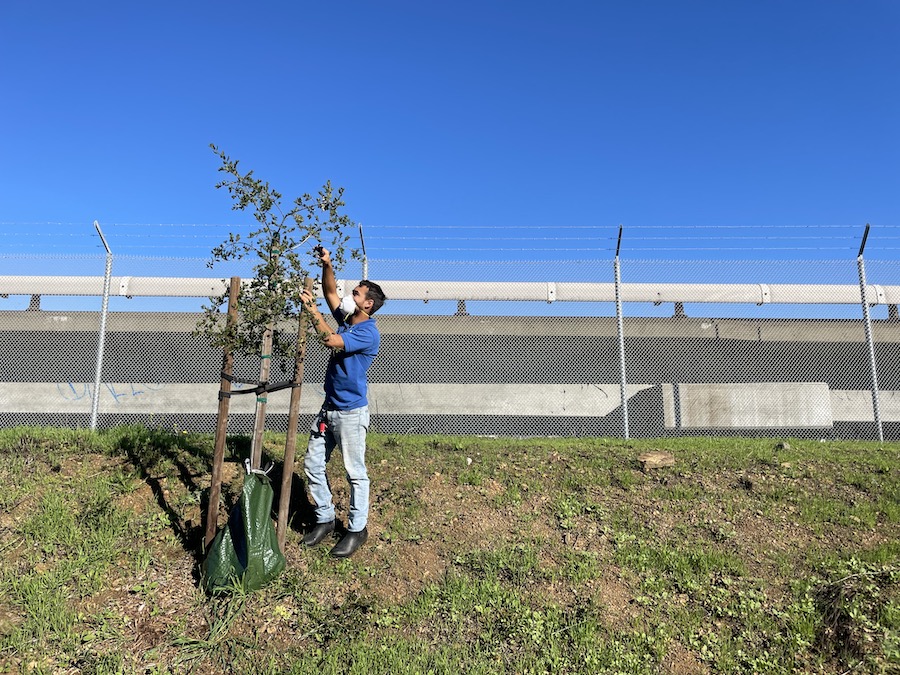
“Everyone is really focused on solution-oriented approaches to issues, and are not just throwing their hands up and saying ‘that’s that.”
—Megan Lamb, Co-Executive Director, Groundwork Richmond
That mantra, held by many community groups and activists in the Iron Triangle, drives an array of projects linked to the greenway.
“Everyone is really focused on solution-oriented approaches to issues, and are not just throwing their hands up and saying ‘that’s that,’” said Megan Lamb, a Richmond resident and co-executive director of Groundwork Richmond, a nonprofit working with the city and other nonprofits to “green” the last mile of the greenway.
When community groups recognize challenges in Richmond, many use the trail and surrounding space to address them. Walk the greenway, and you encounter parks, gardens, future arbors, murals, watersheds, orchards and activities, developed by Richmond, for Richmond. On Sunday mornings, scores of cyclists begin a SelfCare Sunday group ride at the Unity Park Bike Hub, a “super shed” that Rich City Rides, a nonprofit bike advocacy group with a worker-owned bike shop, uses as its greenway satellite office of sorts.
“The bicycle is just the vehicle that we use to unite community members. … I think our guests and participants are the main ingredients.”
—Najari Smith, Founding Executive Director, Rich City Rides
Founding Executive Director Najari Smith said that the greenway was where Rich City Rides started hosting bike repair clinics two years before the shop opened in 2014. Over time, he said, they have become cultural gatherings.
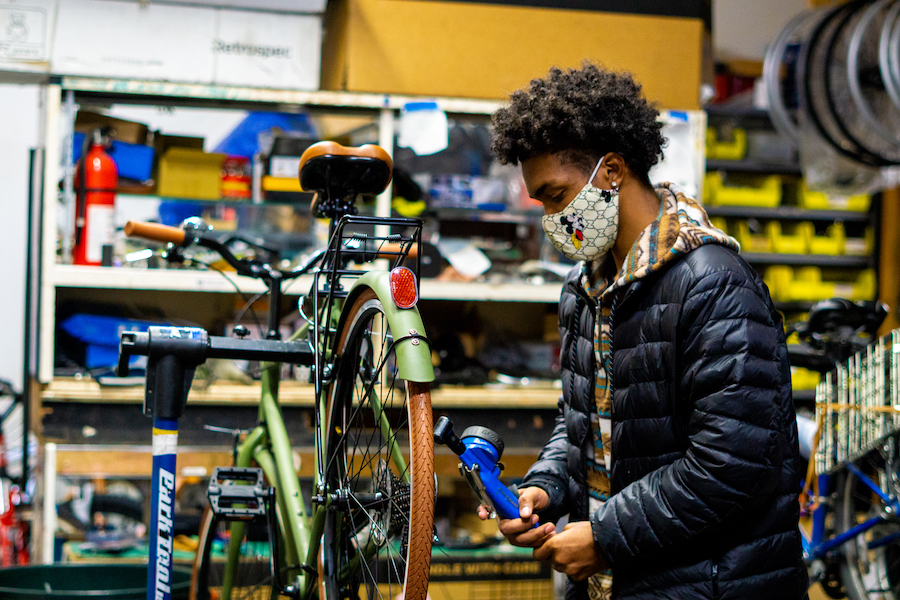
“The bicycle is just the vehicle that we use to unite community members,” Smith said. “You know, it’s an ingredient. But I think our guests and participants are the main ingredients. For us, it’s a ritual. It’s a thing that we do that gives us reason. It’s like sitting around the table at dinnertime.”
Before the hub at Unity Park opened, the Sunday riders would gather at the bike shop, located about a half-mile north of the trail at 15th Street and Macdonald Avenue. “We used to start the rides from the front of the shop,” Smith said. “Once the Bike Hub was built, it was right on time. Our rides had gone from like 12 people to like 20 people to where it was overflowing into the street. [The hub] allows us to activate this park.”
Activation is a topic that came up often during conversations with Richmond Greenway-connected organizers. Building not just spaces, but events, like a recent roller skate shindig at Unity Park, brings the community together.
“The more the space is activated, the less likely unhealthy and unsafe activities are [to take place],” Lamb said. “We want to be a part of that intentional activation. And people can see their own community reflected back at them.”
Reimagining Spaces With the People Who Know Them
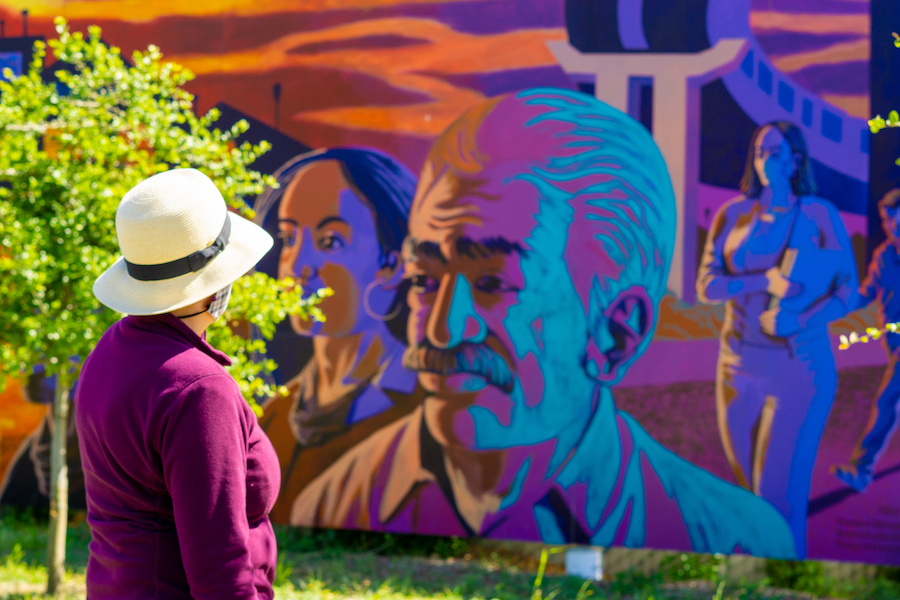
On Nov. 11, 2021, a few days before the Urban Tilth cleanup and planting event, I visited Pullman Portal, the western entryway to the eastern portion of the greenway, which is divided by a set of active train tracks and major roadways. Arborists with Groundwork Richmond watered and pruned young redwoods that line the pathway below the BART tracks. The trees, as they grow, will not only combat air pollution in the neighborhood, but also noise pollution from the trains that pass almost directly above the eastern segment of the greenway. In the meantime, said Groundwork Richmond Co-Executive Director Lorena Castillo, BART passengers can look out the southside windows of the trains and see themselves and the city’s businesses reflected in a Pullman Portal mural celebrating Richmond’s frontline workers.
Lamb led me to the greenway’s western section trailhead—a labyrinthine process I couldn’t figure out alone just one day later. There, I saw BMX riders and remote-control trucks whipping around on different mounds of Dirt World, which is free to the public, before heading to the developing Harbour-8 Park closer to the trail’s western endpoint.
It’s a sunny morning in the Iron Triangle, home to two census tracts that are downwind from one of the biggest oil refineries west of the Mississippi and that rank among the most underserved in the Bay Area, California and the United States.
“Right next door to the Chevron refinery is one of the top 1% of the worst census tracts in California for living by environmental toxins,” said Toody Maher, executive director of Pogo Park, the nonprofit that is developing Harbour-8 Park on land acquired in partnership with the Conservation Fund. “High rates of poverty, some of the lowest-performing schools in California. Used to be ranked the seventh-most-violent neighborhood in America for gun violence. And there’s just no green space, no usable green space.”
In 2007, Maher moved to a neighborhood 1 mile away from the Iron Triangle. She came with a goal. “I wanted to bring a park to life,” she said. “I wanted to make, like, the best park in the world. And I landed here with my little dream.”
Her first project, Pogo Park No. 1 in 2008, was to work with neighborhood residents to transform the half-acre Elm Playlot, located about a mile north of the greenway off Eighth Street, into a vibrant kids’ space. In 2011, she began to collaborate with the city on the Unity Park project, and she’s been actively involved with the greenway ever since.
Fourteen years after hiring Pogo Park’s first team members, without looking at a schedule, Maher promised me I’d find at least one original employee working at Elm Playlot, where I headed after speaking to her at the Harbour-8 site. Indeed, Tonie Lee, park director and 14-year employee, was there. Asked why she’s stayed with Pogo Park since the beginning, she cited the opportunity to give back to her community in tangible ways—with jobs, with a free food program, with green space, with time.
“People come to us with everything,” Lee said. “[For] therapy, or they could be feeling bad, and just want someone to talk to. It’s just a gift to be a part of it. Definitely makes me want to keep coming back and staying around.”
Abigail Montejo, a member of Pogo Park’s community development team, typically works at the Harbour-8 site but was helping to tidy up the space—which started as just a dirt lot with a swing set and slide and has transformed into a green space with disc swings, a basketball court, picnic tables, tricycle course and other amenities. Across the park, James Anderson was staining the basketball half-court.
“For me, it’s truly a blessing,” said Anderson, a lifelong Richmond resident. “Not just working for Pogo Park, but coming from the community to work for Pogo Park. That is what’s amazing.”
Elm Playlot will soon connect to the future Harbour-8 Park by way of a pedestrian-friendly pathway under construction, the Yellow Brick Road. Like the park, the idea was conceived by Iron Triangle residents, specifically a summer youth group that wanted “safe, green and clean” passage to parks, schools, churches, community centers and other essential spaces. And then will come Harbour-8. Already home to the Pogo Park offices, Harbour-8 will soon provide a perpetual festival-like atmosphere along the greenway with recreational equipment, 21 climate-resilient oak trees, a miniature soccer stadium, a calming-circle seating space, murals, and an archway and wall bricked by team members who earned prevailing wages for the work, according to Maher.
“This is our dream, that it’s kind of like Disneyland, like a little carnival,” she said as she looked at a new set of Scientific Art Studio renderings of the playspace that show a splash park, a climbing gym and a marketplace. “Walk through the archways, and you come in and you’re in another world.”
20+
No. of groups that advocated for the greenway to be adopted as a city park
63,000
Pounds of food distributed by Urban Tilth in the Richmond community in 2020
15%
Portion of Richmond’s 110,567 residents living below the poverty line
20+
No. of groups that advocated for the greenway to be adopted as a city park
63,000
Pounds of food distributed by Urban Tilth in the Richmond community in 2020
15%
Portion of Richmond’s 110,567 residents living below the poverty line
(The Magic of) Laying Down Roots
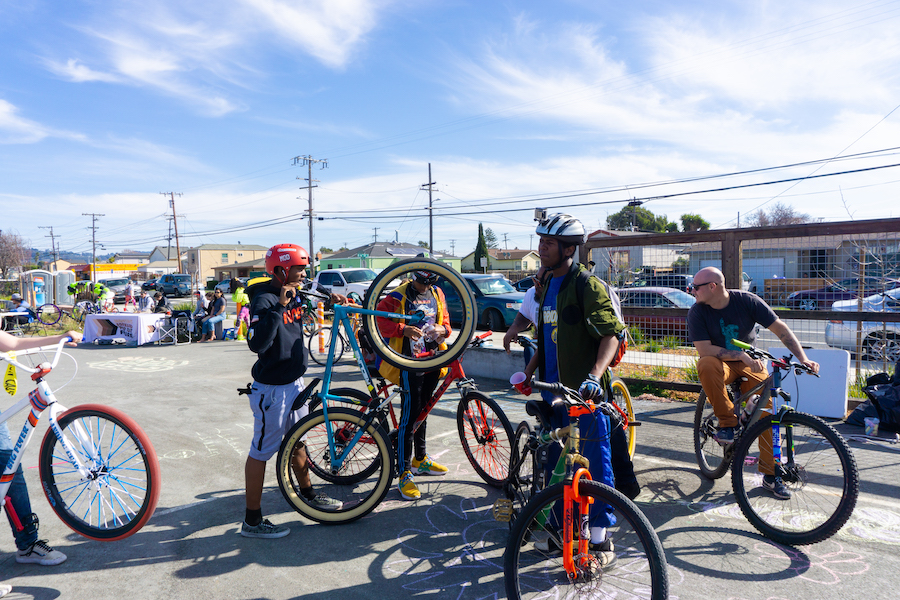
“You don’t see the roots under the ground, but they’re there way before anything sprouts out of the dirt.”
—Najari Smith, Founding Executive Director, Rich City Rides
Smith said the reason that Rich City Rides continues to lead rides, classes, bike giveaways (over 3,000 to date) and everything else is the magic and energy that the efforts produce.
“Magic is hard work,” he said. “That trick that Harry Houdini does in like 60 seconds took like six years to master. You can’t ignore that. You don’t see the roots under the ground, but they’re there way before anything sprouts out of the dirt.”
Investing in the community is a huge focus for the community—as demonstrated by organizations like Urban Tilth, which in 2020 produced 10,725 pounds of food and distributed nearly 63,000 total pounds in the community. The team delivered 11,429 CSA (Community Supported Agriculture) boxes, many of them to families who applied during the pandemic to receive free produce. On Wednesday afternoons, the team sets up a free farm stand on the greenway with food produced on a 3-acre farm in North Richmond that was once a vacant county-owned lot. This September, they entered into a 30-year agreement with Contra Costa County to continue to develop the farmland.
Urban Tilth’s roots trace back, said longtime greenway gardener Paula Kristovich, at least to a Richmond Library screening of a documentary about community gardens in Cuba. “And this guy, Park Guthrie, got up and said, ‘Well, who wants to do a community garden?’” she said.
Guthrie, Urban Tilth’s first executive director, would go on to “cc” Robinson, then working with the Watershed Project and a volunteer for Urban Tilth, and others on an email that envisioned the greenway as something of a community cornucopia.
“He wrote this beautiful vision of how it could be, with playgrounds and gardens and how you could just walk around and pop berries in your mouth in a place called Berryland,” Robinson said. “It was really compelling.”
Guthrie’s vision was plausible to Robinson. Her grandparents were among nearly 20 families who, three generations ago, collectively moved from Louisiana to an industrial zone in Richmond. Refusing to abandon their agrarian roots, they teamed up with the families to buy 320 acres of farmland in Fairfield.
“You know, we started with one guy, Park, and this vision,” Robinson said of Urban Tilth. “Now we’re 49 people. It’s astounding. Seven different program areas. Seven sites. And 90% of [staff members] are Richmond residents, kids from the neighborhood. Ninety-five percent are people of color. It’s a legion, a little cohort. A crew of people who are utterly dedicated to transforming the space to open space, to healthy spaces, to healthy food.”
The Progress and the Challenges
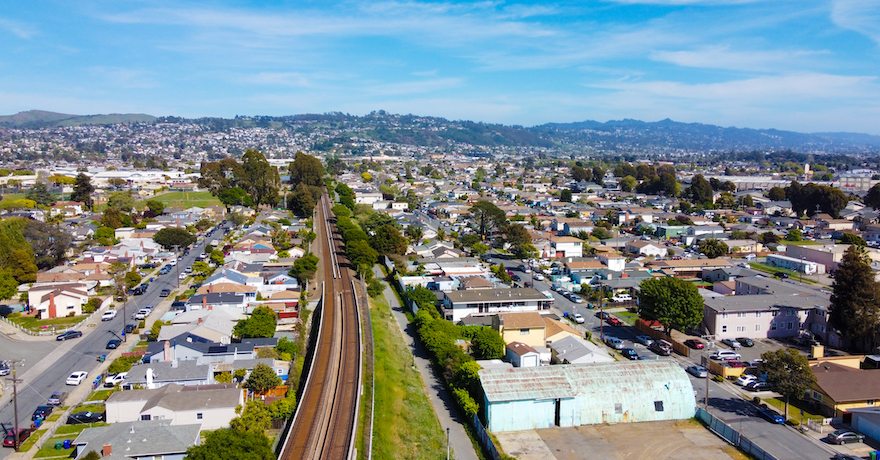
Patrick Phelan, Richmond’s infrastructure administrator, acknowledged that city properties like the greenway often bear the brunt of Richmond’s budget and staffing issues. But he talked of the many benefits of activating the path and pointed to projects that have turned dead ends into connections. At the greenway’s western terminus, there is now a protected two-way bike lane that goes down Ohio Avenue to the San Francisco Bay Trail. At the greenway’s eastern edge, the city recently partnered to link the trail with the Ohlone Greenway in neighboring El Cerrito at San Pablo Avenue.
With support from RTC, the Local Government Commission and others, Phelan submitted a successful grant application to the California Department of Transportation (Caltrans) to conduct a feasibility study of bridging the east–west Richmond Greenway gap at 23rd Street and Carlson Boulevard. This spring, public engagement will begin.
“Right now, the Richmond Greenway is kind of hampered in being a great active transportation corridor because of that gap,” Phelan said. “The west side of the greenway, I think, has been activated. There are a lot of spaces just to hang out at the greenway. But the eastern half, I think, would really benefit from that gap being closed.”
He continued, “I’m grateful to get to work on these kinds of projects here in Richmond, even with all of the challenges of making things happen and taking care of things with our budget challenges. These spaces would not be alive and thriving without these groups, and a lot of these projects would never happen without the groups as well.”
For all the progress made on the greenway, longstanding community challenges continue to present themselves there. And community groups continue to address them.
Illegal dumping persists, and cleaning up after those who do it is seemingly part of every job description. Santos said the project she’s most excited about is working with Robinson on developing an anti-dumping campaign, which will include working with partners to hold a free or discounted day for throwing away bulky items. Nearly 15% of Richmond’s 110,567 residents live below the poverty line, according to census figures, and the cost of disposing of furniture and other large items presents an economic barrier for many.
The Bay Area’s homelessness crisis—over 35,000 people were unhoused as of 2020—can be seen along the greenway as well. Between the Harbour-8 block and the 6th Street Community Garden, a small encampment developed along a portion of the trail where garden plots like Kristovich’s can be found. Safe Organized Spaces (SOS!) Richmond, a nonprofit that addresses needs of the homeless, has teamed up with residents of numerous encampments to beautify unhoused spaces and address illegal dumping, and Kristovich said the people in the encampments have made a concerted effort to be part of the solution.
Nicole Daniels-Reyes, who lives in the encampment, said they are just trying to be good neighbors in an area where they feel safe and comfortable, even though the situation is hopefully a temporary one. “I love it because there are vegetables and herbs and fruits that they plant, and anyone’s welcome to … them,” she said. “[People are] always here, busy cleaning, keeping it looking nice. They have been really cooperative with us. And they’ve helped us so much.”
In her conversation with Santos during the Urban Tilth volunteer event, Perdomo said that while those living there at the encampment are in a tough situation, it’s not being made more difficult by the response to their presence. They haven’t been harassed. “Even that, I think, is about positivity, which is really needed here,” she said.
Richmond Greenway-Bay Trail Connector
The Richmond Greenway is a critical piece of the Richmond Greenway-Bay Trail Connector—one of 13 priority projects for the developing 2,500-miles-plus Bay Area Trails Collaborative (BATC).
An RTC TrailNation™ project, BATC seeks to connect multiple major trail networks into a regionwide trail system that will travel through nine counties and generate transformative active transportation, economic, health, climate and environmental benefits.
Learn more about the connector project.
When you subscribe to Rails to Trails magazine, you’ll have access to many other features like this one. Our magazine is a premium of Rails-to-Trails Membership. Join today to start receiving the magazine!

Donate
Everyone deserves access to safe ways to walk, bike, and be active outdoors.